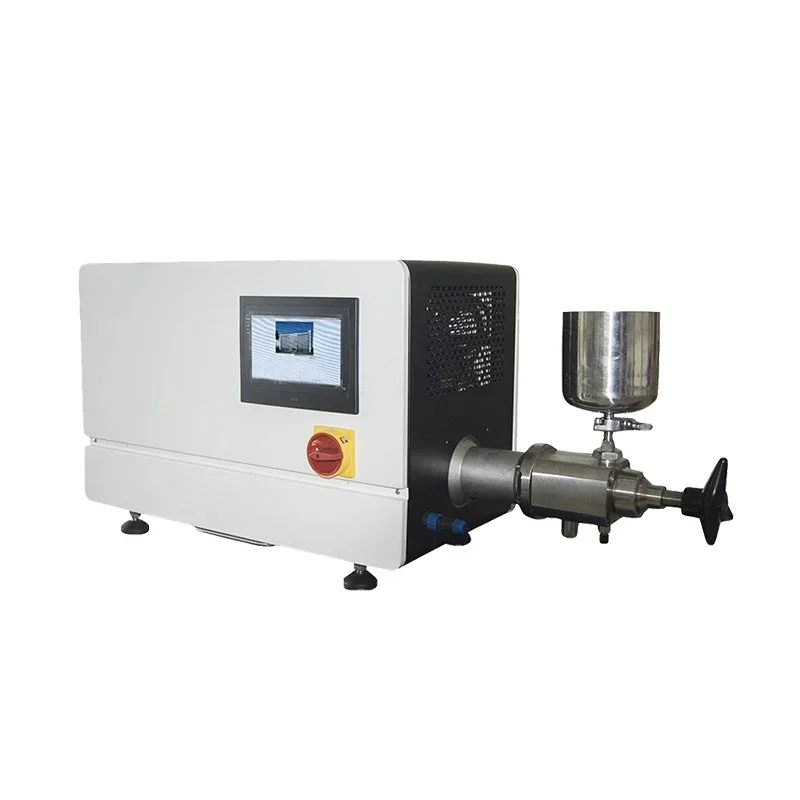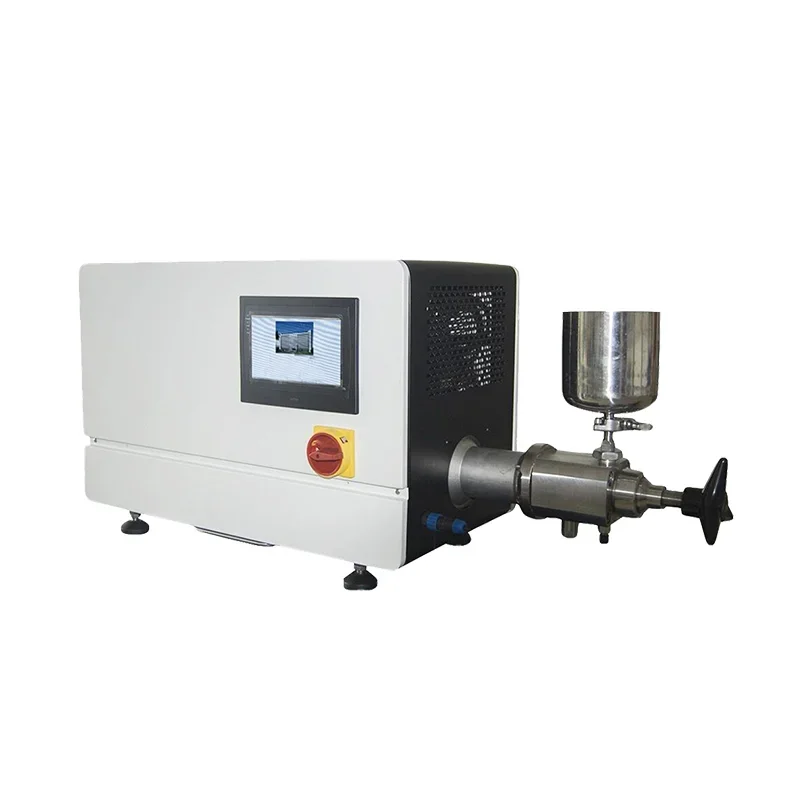Ultra high pressure homogenization is an advanced technology that has evolved significantly from its early laboratory applications to becoming a cornerstone in various industrial processes. This technology leverages extreme pressures and shear forces to achieve uniform particle size reduction, emulsion stabilization, and cell disruption, among other benefits. Ultra high pressure homogenizer is an advanced equipment widely used in food, pharmaceutical and chemical industries. It homogenizes materials under extremely high pressure, effectively breaking cells and dispersing particles, thereby improving the stability and uniformity of the product.

Laboratory Innovations: The Genesis of Ultra High Pressure Homogenizer
Early Developments
The concept of high pressure homogenization dates back to the late 19th century, initially used for cell disruption in biological research. Early models were rudimentary, limited by technology and material science constraints. However, the foundational principles were laid down, setting the stage for future innovations.
Advancements in Equipment
As materials science and manufacturing techniques advanced, so did the design of ultra-high pressure homogenizers. Modern laboratory models offer precise control over pressure, temperature, and flow rates, enabling researchers to explore complex interactions at the molecular level. These advancements have significantly broadened the scope of Ultra high pressure homogenization applications.
Industrialization: Bridging the Gap from Lab to Factory
Scaling Up the Technology
Transitioning Ultra high pressure homogenization from the laboratory to industrial settings involved overcoming significant engineering challenges. Key considerations included scaling up equipment to handle larger volumes efficiently, ensuring durability and maintenance-friendliness, and optimizing energy consumption.
Automation and Control Systems
Automation has played a pivotal role in the industrialization of Ultra high pressure homogenization. Advanced control systems now monitor and regulate process parameters in real-time, ensuring consistent product quality and maximizing production efficiency. These systems also facilitate data collection and analysis, aiding in continuous process improvement.
Multi-Field Applications: The Versatility of Ultra high pressure homogenization
Food Industry
In the food industry, Ultra high pressure homogenization is revolutionizing processing methods. It is used to create stable emulsions and suspensions, enhance texture, and extend shelf life. For instance, dairy products like homogenized milk and yogurt benefit from smoother textures and improved stability against separation. Additionally, Ultra high pressure homogenization enables the creation of novel food textures and flavors, catering to evolving consumer preferences.
Pharmaceutical Industry
The pharmaceutical sector leverages Ultra high pressure homogenization for the production of nanoemulsions, liposomes, and other advanced drug delivery systems. By reducing particle size and improving dispersion uniformity, Ultra high pressure homogenization enhances the bioavailability and stability of drugs. This technology is also crucial in the sterilization of sensitive formulations without denaturing active ingredients.
Cosmetics and Personal Care
In cosmetics and personal care products, Ultra high pressure homogenization ensures uniform particle distribution, leading to smoother textures and enhanced product performance. It is particularly valuable in the formulation of emulsions, suspensions, and nano-encapsulated actives. By improving product stability and sensorial properties, Ultra high pressure homogenization contributes to the development of innovative and high-quality cosmetics.
Biotechnology and Nanotechnology
Ultra high pressure homogenization finds applications in biotechnology for cell disruption and extraction of intracellular components. In nanotechnology, it aids in the synthesis of nanoparticles with controlled size and shape, crucial for various applications including catalysis, electronics, and medical imaging.
Continuous Evolution and Innovation
Emerging Technologies
As research progresses, new variations of Ultra high pressure homogenization technologies are being developed. For example, hybrid systems combining Ultra high pressure homogenization with other processing techniques (e.g., microwaves, ultrasound) offer enhanced functionality and efficiency.
Sustainable Processing
Sustainability is increasingly becoming a focal point in industrial processing. Ultra high pressure homogenization, with its ability to reduce waste, energy consumption, and the need for harsh chemicals, aligns well with these goals. Future innovations will likely focus on further optimizing energy efficiency and minimizing environmental impact.
Interdisciplinary Collaboration
Cross-disciplinary collaboration will drive the continued evolution of Ultra high pressure homogenization. By integrating insights from materials science, biotechnology, engineering, and other fields, researchers can address complex challenges and unlock new applications.
Conclusion
Ultra high pressure homogenization has come a long way from its humble beginnings in laboratory settings to becoming a versatile technology with widespread industrial applications. Its journey underscores the importance of continuous innovation, interdisciplinary collaboration, and adaptability in addressing the diverse needs of modern industries. As we look to the future, the potential for Zinscien Technology ultra high pressure homogenization to revolutionize even more sectors and contribute to sustainable processing practices remains immense.
https://www.zinscien.com/multi-field-applications-of-ultra-high-pressure-homogenizer.html
